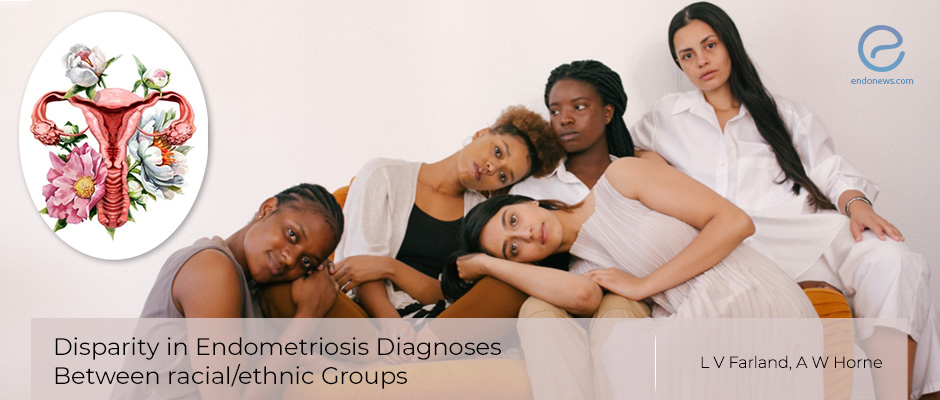Endometriosis Diagnosis in White, Black, and Asian Women
Jun 26, 2020
There are distinct disparities in the diagnosis of endometriosis among women of different ethnic and racial origins. The authors of this article comment on the possible reasons for these disparities and the importance of recognizing them.
Key Points
Highlights:
- This mini commentary focuses on the possible reasons for diagnostic disparities among women of different ethnic and racial origins.
Importance:
- Only by recognizing and understanding the reasons for these disparities can physicians ensure all women receive an appropriate and timely referral for endometriosis diagnosis and treatment.
What's done here:
- The authors of the commentary tapped into the possible reasons why there are disparities in endometriosis diagnosis among women of different ethnic origins.
Key results:
There may be several reasons why there are disparities in the diagnosis of endometriosis between white, black, and Asian women, according to the authors of the commentary. These are:
- Inconsistent symptom recognition both by patients and physicians
- Lack of a non-invasive diagnostic test
- Patient’s socio-economic background and access to healthcare
- Diagnostic bias
Lay Summary
In a commentary published in the "International Journal of Obstetrics and Gynaecology", Drs. Farland and Horne talk about a study by researchers in Canada and the Philippines, which found that black women are less likely, and Asian women are more likely to be diagnosed with endometriosis compared to white women.
According to Drs. Farland and Horne, there are many unanswered questions regarding this disparity in diagnosis. For example, it is not clear whether these associations are the result of diagnostic bias or whether there is an actual difference in the occurrence of the disease among women belonging to different ethnic groups.
Diagnostic bias is any systematic error in thinking that can influence decision making and judgment leading to a missed or inaccurate diagnosis. Historically, endometriosis has been defined as a disease affecting “high achieving women”. The authors give the example of a study published in 1979 which says: “Typically, our patients with endometriosis appear to have an intense desire to excel. They are usually well-dressed and have trim figures.” Today, similar views may still exist and influence clinical care, leading to disparities in the diagnosis of endometriosis, according to Farland and Horne.
Added to this, is the difficulty of diagnosing endometriosis. Women have to wait on average seven years to receive a diagnosis from the time their symptoms first appear. This is partly due to inconsistent symptom recognition by both the patient and their doctor. Another big factor is the lack of a non-invasive diagnostic test. (Laparoscopic surgery is the only way to diagnose the disease for sure.) There may be other factors contributing to the disparity in diagnosis like socio-economic background and access to private healthcare for example.
Interestingly, when the researchers focused only on women who were infertile, there was no statistically significant difference in the diagnosis of endometriosis among black, Asian, or white women. “Once patients establish access to clinical care, disparities in diagnosis diminish,” Farland and Horne wrote.
The authors concluded that more research is needed to better understand the association between endometriosis and ethnicity. However, they added, disparities in access to diagnostic care must be taken into account when interpreting the results of such studies.
Research Source: https://pubmed.ncbi.nlm.nih.gov/31033134/
ethnicity race diagnostic bias endometriosis diagnosis

